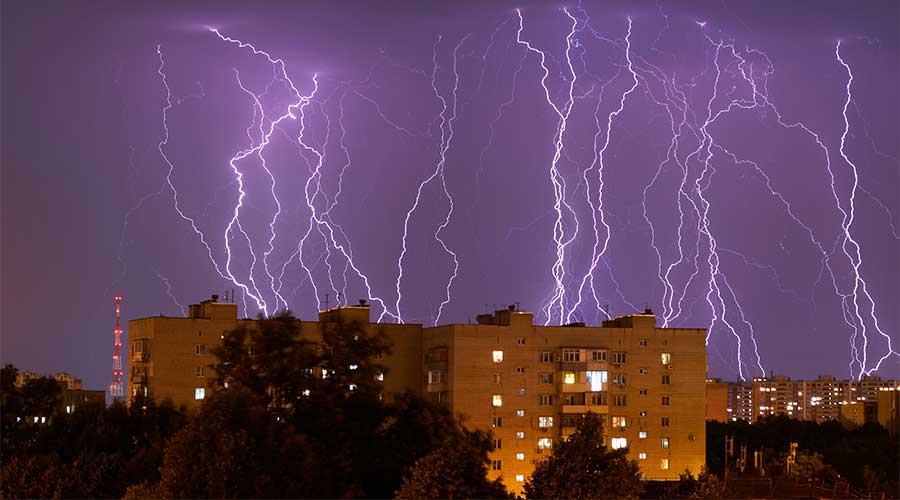Architecture in the United States is still relatively new, compared to other facilities around the world. Despite this, most facilities need to be updated to meet current safety standards. Natural disasters, such as earthquakes, hurricanes and tornados can have devastating consequences on buildings that are not prepared. It is predicted that these extreme weather events will increase over the years, so it is crucial that hospitals and other healthcare facilities have the appropriate infrastructure in place so that patient care isn’t compromised.
Hospitals and other healthcare facilities are required to operate 24/7, so they must schedule and plan maintenance around these mission-critical activities. Healthcare Facilities Today spoke with Annette Rubin, CEO at Vero Building Systems about how hospitals and other healthcare facilities can upgrade their buildings to adapt to weather changes while still being sustainable.
HFT: Why has there been an increase in building failure over the last few years? How can architects better plan for shifting infrastructure?
Annette Rubin: Building failure in the United States is nothing new- as far back as our history goes there are stories of devastating fires burning entire towns, earthquakes leveling cities, hurricanes ravaging the coast, tornadoes in the Midwest, winter storms in the north/ northeast, etc. As long as we have built with wood there have been entire communities devastated by the results of this method of building. Until recently we did not have alternative options to build safer, affordable, environmentally friendly buildings. This is why my husband and I have started Vero Building Systems, to introduce an innovative way to build better in the US.
HFT: How does weather impact building longevity? How do designers take into account different climates across the nation?
Rubin: The answer to this question varies greatly depending on the materials and methods used when building a specific structure, and on the geographical location and general weather conditions. If you live on the coast, for example, salt air can corrode your structure much quicker than if you live inland. The answer to making sure your structure lasts no matter the weather conditions is building with a system that stands up to all weather events such as the Vero Building System. Our building system can be used to build any structure from a backyard shed to a multi-story resort- it can replace widely used systems such as concrete block, tilt wall, or old fashion stick build. We can deliver structures that withstand up to category 5 wind strengths, devastating earthquakes and tornadoes. Structures built with Vero Building Systems can burn for 2.5 hours before structural damage occurs- no more ceilings falling in on families.
HFT: Why is it so important that hospitals and other healthcare facilities are soundly built? How can residents of older facilities be assured of their safety?
Rubin: This issue of healthcare facilities being built to withstand catastrophic weather is very close to my heart, my mom was a nurse, my sister is currently a NICU nurse and my childhood best friend is a pediatric nurse. It is imperative that healthcare facilities can withstand extreme weather events because of the inability to evacuate all patients. Any hospital with either an ICU or NICU should be able to withstand catastrophic weather. In certain luckier situations there will be a window for evacuation- Let's say in the event of a hurricane- There is generally 36-48 hours to evacuate at most. When evacuating a NICU infant there are always 3 people necessary to make this happen, A nurse, a doctor qualified to intubate a NICU patient, and a driver/pilot. The patient then has to be driven or flown to a hospital with an open bed, and far enough outside of the path of the storm to be deemed safe. By car, this could be multiple hours both ways. It is virtually impossible to evacuate all the patients in time, which then puts our healthcare staff in the absolutely impossible situation to choose which patients stay or go, and then choose which staff must stay to continue care for the remaining patients in lieu of evacuating with their own family and children. - There is also the major issue of elderly care health facilities- there is nowhere to evacuate these patients unless their health is in good enough condition, and they have family members close by willing to evacuate them safely.
HFT: Why do you think design will play such an important role in the well-being of healthcare workers in a post-pandemic world? How do current designs impact workers now?
Rubin: If we can begin to design healthcare facilities to withstand all types of disasters- Storms, fires, active shooter events, etc. we can not only protect the lives of patients but also protect the lives of our healthcare workers.
HFT: What are the benefits of early planning when it comes to safety?
Rubin: The benefits to early planning can mean the difference between life and death for our healthcare workers and their patients. If we can design safe structures that will withstand weather events, and even devastating active shooter events that have increased in healthcare facilities in recent years- a structure built with the Vero Building System is bulletproof, blast proof, fireproof, and storm safe- If we begin to design our structures from the start with better, and more innovative materials, we will be able to save lives.
Mackenna Moralez is the associate editor of the facilities market.

 Contaminants Under Foot: A Closer Look at Patient Room Floors
Contaminants Under Foot: A Closer Look at Patient Room Floors Power Outages Largely Driven by Extreme Weather Events
Power Outages Largely Driven by Extreme Weather Events Nemours Children's Health Opens New Moseley Foundation Institute Hospital
Nemours Children's Health Opens New Moseley Foundation Institute Hospital Code Compliance Isn't Enough for Healthcare Resilience
Code Compliance Isn't Enough for Healthcare Resilience Ribbon Cutting Marks First Phase Completion for New Montefiore Einstein Facility
Ribbon Cutting Marks First Phase Completion for New Montefiore Einstein Facility